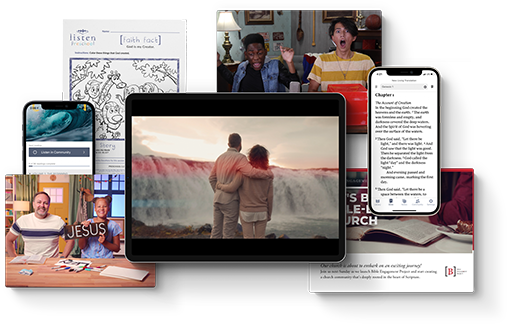Back to the Preaching Basics
By Chris Colvin | Posted In Ministry Tools
Do you want to get better at preaching? Of course you do. No matter how long you’ve been preaching, you’ll always find room to grow.
One way to get better is to go back to the basics. Sure, you may have them down pat. You could teach others, and I hope you do. Nevertheless, it’s always helpful to go back to a simple sermon structure, revisit how you first learned to preach, and make sure you’re still doing the important things.
This is what athletes do. My daughter has been playing tennis for nearly a decade now. Next year, she’ll be entering high school and hopes to make the tennis team. To get ready, she’s taking some private lessons. While her group sessions cover some advanced parts of the game, these one-on-one times have taken her back to the beginning: how to hold and swing the racket, when to perform a split-step, and where to drive the ball.
By returning to the basics of her swing, she has identified some bad habits she picked up along the way that she now needs to unlearn. Nothing could better prepare her for the next level.
Similarly, your next level of preaching may just depend on getting back to the basics.
Three Simple Steps
When I think of the basics of preaching, three simple steps come to mind. These three parts form the structure of any sermon. Like the feet of a tripod, they help balance the load. Those three steps are explanation, illustration and application.
Explanation is just that — explaining the text. Whether you are preaching an expository sermon or a topical one, you will always be explaining the text. You read a passage of Scripture and then help the congregation understand the text in its context. Simple enough.
Illustration is making the explanation come alive. It’s putting skin on the bones of the text. An illustration can be anything from a simple quote to a compelling story. It can be words you say, a video you show, or an object with which you interact. The possibilities are limitless.
Application is how you put to use what you just learned. The point of discipleship is doing, so what do you want congregants to do? Disciple making without real-world application is not so useful.
Putting Them Together
So, how do you bring together these simple steps to form a sermon structure? Although there’s no hard-and-fast rule about how many of each you should use or where you should place them in your sermon, you can easily line them up in order.
Go back to a simple sermon structure, revisit how you first learned to preach, and make sure you’re still doing the important things.
In fact, for those starting out in preaching, I think this is a simple way to keep on track. If you’ve never preached before, or you’re helping someone else who hasn’t, using this simple structure will help you out.
First, start with a main idea. What do you want people to know? Coming up with just one idea can be challenging, but it will help you keep all your ideas in order. It makes you laser focused, which will help your congregation understand and put to use what you are telling them.
Once you’ve got your main idea, dig into the text. As you read the passage of Scripture, or the texts you will be using for a topical message, find the ideas that support your one main idea. When you preach the message, you will read the text and then explain it.
Follow up each explanation with some kind of illustration. Again, it can be a story, a quote, or even just an image. But remember, you’re making it come alive for them.
Your illustration should lead directly into the application. You’ve explained what the Word has to say, and you’ve brought it to life. Now, you want people to know what to do with it. That application can lead to the next point. Recap the previous idea, and then add the new one as you read the next section of Scripture.
Here’s an example of how this works using Psalm 34:8–9. For our main idea, we want people to know they can have a bright future in God. Verse 8 says, “Taste and see that the Lord is good; blessed is the one who takes refuge in him.”
This main idea could be written, “You can have a bright future when you realize the goodness of the Lord is your refuge.”
For the explanation, you might point out that “taste and see” is an invitation, given from someone who has been through something with God’s help. You might also point out the use of “refuge” as a military term, a tower in the center of a city where people run in times of need.
For the illustration, you might share a story of people huddling in a basement during a storm or tell a funny story about tasting a new food.
For the application, you can ask people to go to God first whenever they face any danger in life.
That would lead right into the next verse: “Fear the Lord, you his holy people, for those who fear him lack nothing” (verse 9).
Your main idea is, “You can have a bright future when you understand that the fear of the Lord is your provision.” Now you try it. What would your explanation, illustration, and application be?
Once you see how simple it can be, you will not only begin to remove hurdles to your sermon prep, but you will also come away with a message that is easy to follow and apply.
No matter what stage of personal sermon growth you’re in, you will begin to grow even more. Getting back to the basics is not about starting over. It’s about progressing even further from wherever you are now.

